In 1946, a group of Soviet school children from the Young Pioneer organization presented to the American ambassador to the Soviet Union, William Harriman, a carved wooden replica of the Great Seal of the United States, as a token of appreciation, amity, and solidarity for their alliance in the Second World War, and as promise of continuance of this friendship. The seemingly harmless gift was hung in the study of the ambassador's Moscow residence, where it stayed for seven years until it was discovered that the innocuous-looking souvenir was more than a mere decoration. It was a trojan horse—a ruse by which the Soviets planted in the ambassador’s office one of the most covert listening devices ever created.
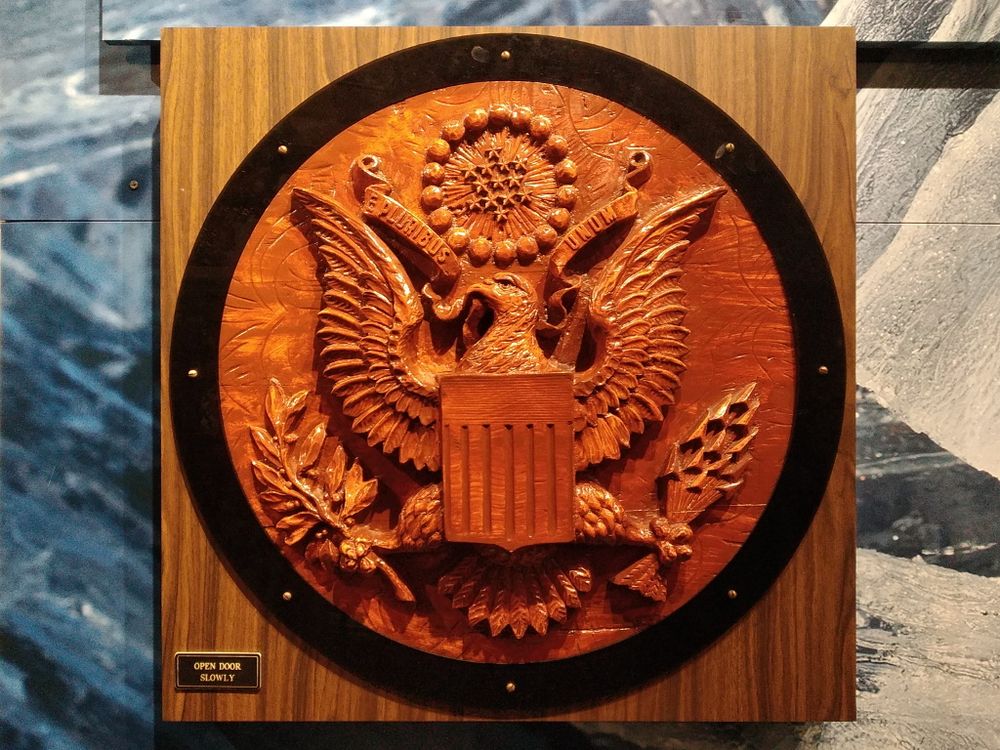
The Great Seal bug. Photo: Boevaya mashina/Wikimedia Commons
Eavesdropping and espionage has played an important role in war as well as in peace since ancient times. The Ancient Egyptians had an organized secret service and espionage is mentioned in the Iliad and the Bible as well as its recordings in the story of the Old Testament. Espionage and intelligence gathering is also mentioned in Sun Tzu’s The Art of War and Chanakya’s Arthashastra.
Russia’s notoriety for eavesdropping and espionage goes back to the times of the Czars. James Buchanan, U.S. minister in St. Petersburg during 1832-33 and later U.S. President, recounted that “we are continually surrounded by spies both of high and low degree. You can scarcely hire a servant who is not a secret agent of the police.”
Neil S. Brown, the United States Minister to Russia from 1850 to 1853, also noted that “the opinion prevails that ministers are constantly subjected to a system of espionage, and that even their servants are made to disclose what passed in their households, their conversations, associations, etc.” Otto von Bismarck, who represented Prussia from 1859 to 1862, stated “it was especially difficult to keep a cypher secure at St. Petersburg, because all the embassies were of necessity obliged to employ Russian servants and subordinates in their households, and it was easy for Russian police to procure agents among these.”
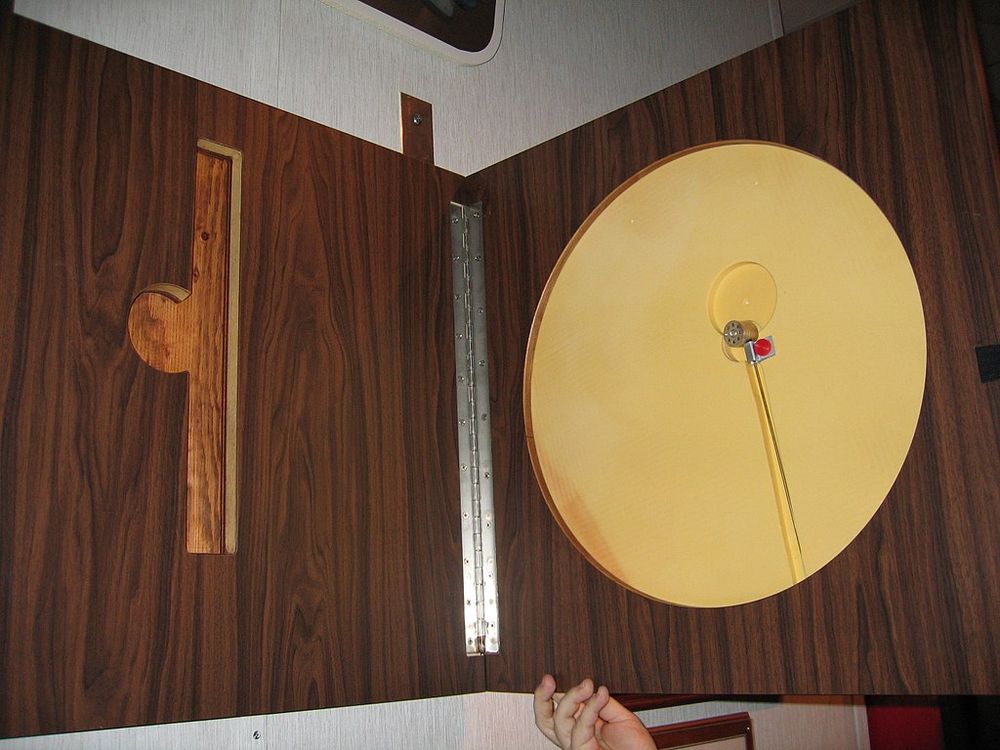
Open view of a replica of the Great Seal bug on display at the National Cryptologic Museum. Photo: Austin Mills/Wikimedia Commons
By the 1930’s, human espionage was supplemented by technical eavesdropping such as wiretaps and microphones. At one point, guests at Spaso House, the U.S. ambassador’s residence in Moscow, were given cards welcoming and warning them: “Every room is monitored by the KGB and all of the staff are employees of the KGB. We believe the garden also may be monitored. Your luggage may be searched two or three times a day. Nothing is ever stolen and they hardly disturb things.”
Bugs and hidden microphones were regularly discovered during the postwar period, but one that managed to evade detection for seven long years was the very sophisticated listening device called “The Thing” implanted on the wooden seal.
The Thing, or the Great Seal Bug, contained no power source of its own nor any wires. Instead, the device was “illuminated” by a strong radio signal from the outside, which powered it on. Once activated, the device would capture sound waves and modulate the radio waves that triggered the device, transmitting it back to the sender. The absence of active electronic components made the bug practically undetectable (when not active the bug remained dead silent), while at the same time gave the bug virtually unlimited life.
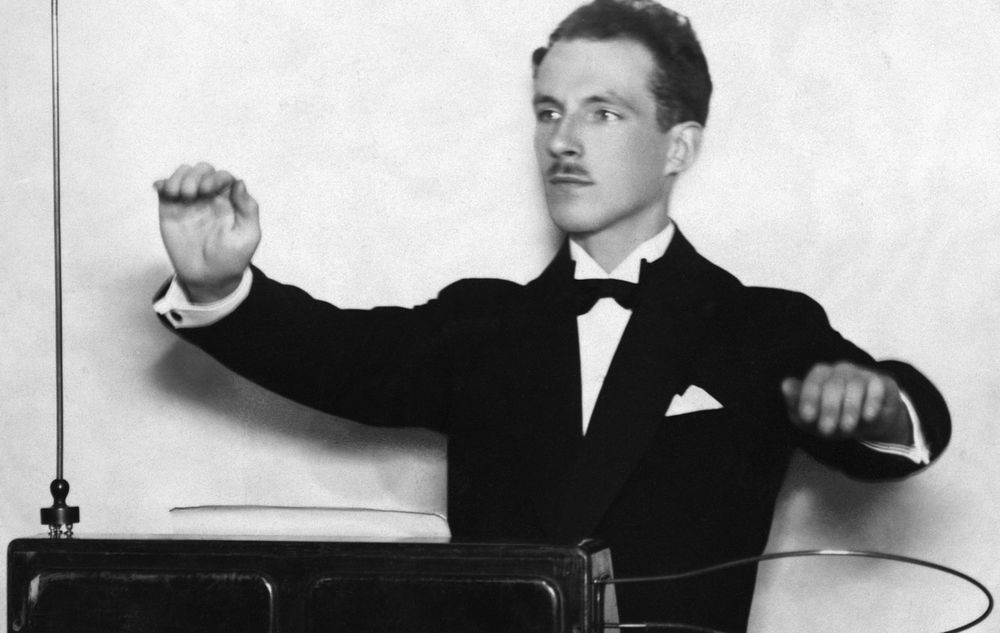
Leon Theremin.
The Thing was the brainchild of the Soviet inventor Leon Theremin, best known for his invention of the eponymous musical instrument, the theremin, in the 1920s. Two decades later, Theremin found himself a prisoner of the gulag where his geniuses were put to use at the sharashka, a secret laboratory within the gulag system. While working at the sharashka, Theremin created the Buran eavesdropping system, a precursor to the modern laser microphone, which worked by using a low-power infrared beam from a distance to detect sound vibrations in glass windows.
The working principle of the Thing was somewhat similar. The microphone hidden inside the wooden seal responded to sound waves generated by conversation in the room by vibrating an extremely delicate metal membrane just 75 micrometers thick. When the device was irradiated with a radio signal of the correct frequency, the movement of the membrane varied the capacitance of the device, which in turn modulated the radio waves that struck, and the waves were re-transmitted by an antenna in The Thing. The receiver demodulated the signal to obtain the sound picked up by the microphone, just as an ordinary radio receiver demodulates radio signals and outputs sound.

Construction of The Thing. Photo: Crypto Museum
The Thing’s simplistic design and passive nature allowed it to go undetected for seven years, until an accidental reception by an operator at the British Embassy, when the Soviets were illuminating the device, lead to its eventual discovery. In 1951, a British military officer monitoring Russian military aircraft traffic, suddenly heard the voice of the British Air Attaché on his radio. The Diplomatic Wireless Service (DWS) was sent to Moscow to investigate the matter, but no bugs were found. Bailey continued to receive strong RF radio signals whenever the device was in operation, which led the British to believe that the Russians were experimenting with some kind of resonance device instead of a regular transmitter. But shortly afterwards, a US military officer had a similar experience when he overheard a conversation that appeared to originate from the ambassador's study at Spaso House. The house was searched, but again, no bugs were found.
In 1952, George Kennan was appointed the new US Ambassador in Moscow, and just before he arrived at Spaso House, the Russians began refurbishing the interior. The work was carried out by Soviet workers without the presence of any American personnel. Worried that the workers might have planted listening devices during the house’s renovation, Kennan ordered sweeps of the house with standard equipment designed to detect the presence of eavesdropping equipment, such as unaccounted radio transmissions. But still, nothing was found.
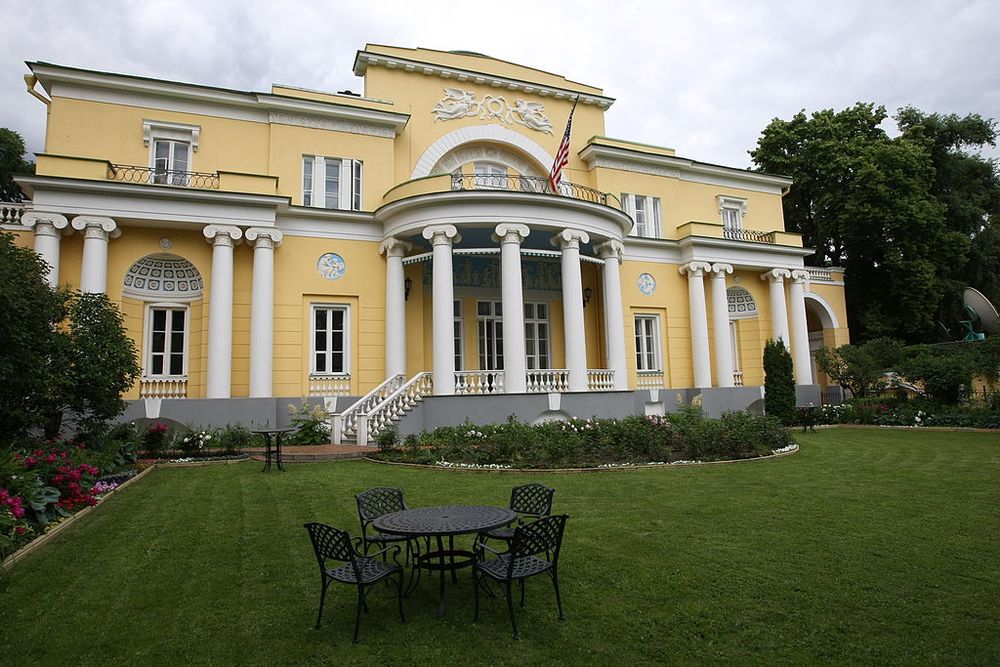
The Spaso House where the bug was planted. Photo: Valeriy Yevseyev/Wikimedia Commons
“The air of innocence presented by the walls of the old building was so bland and bright as to suggest either that there had been a complete change of practice on the part of our Soviet hosts (of which in other respects there was decidedly no evidence) or that our methods of detection were out of date”, wrote George Kennan in Memoirs.
In September 1952, State Department security technicians John Ford and Joseph Bezjian arrived in Moscow with a plan for a more thorough search. Posing as house guests, Bezjian checked into the ambassador's residence, and spent several fruitless days hunting for bugs at night. When these searches yielded nothing, Bezjian suggested that they might have more luck if Kennan gave the eavesdroppers something to listen to.
That evening, the ambassador called his secretary and began to dictate to her a previously declassified diplomatic dispatch while Ford and Bezjian went around the house scanning for signs of tell-tale transmissions.
Suddenly, one of them appeared in the doorway of the study and implored me, by signs and whispers, to "keep on, keep on." He then disappeared again, but soon returned, accompanied by his colleague, and began to move about the room in which we were working. Centering his attention finally on a corner of the room where there was a radio set on a table, just below a round wooden Great Seal of the United States that hung on the wall, he removed the seal, took up a mason's hammer, and began, to my bewilderment and consternation, to hack to pieces the brick wall where the seal had been. When this failed to satisfy him, he turned these destructive attentions on the seal itself.
I, continuing to mumble my dispatch, remained a fascinated but passive spectator of this extraordinary procedure. In a few moments, however, all was over. Quivering with excitement, the technician extracted from the shattered depths of the seal a small device, not much larger than a pencil, which, he assured me, housed both a receiving and a sending set, capable of being activated by some sort of electronic ray from outside the building.
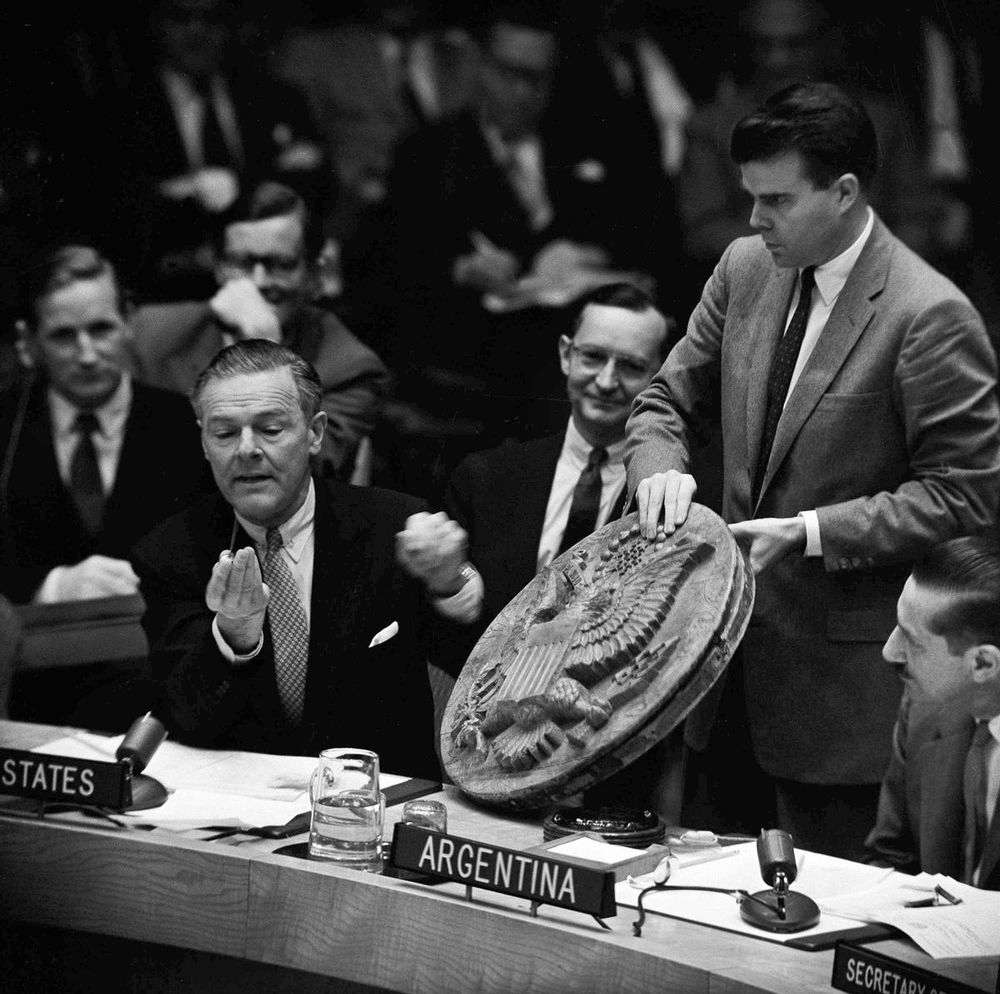
Henry Cabot Lodge showing 'The Thing' at the United Nations on 26 May 1960. Photo: John Rooney/AP
That night Bezjian slept with the bug under his pillow to prevent it from being stolen. The next morning, the bug was flown back to Washington for inspection, where it acquired the name “The Thing” because it was so perplexing that the befuddled investigators had no idea how it worked.
Kennan recalled that the device “represented, for that day, a fantastically advanced bit of applied electronics. I have the impression that with its discovery the whole art of intergovernmental eavesdropping was raised to a new technological level.”
Despite the seriousness and shadiness of the incident, Kennan managed to find humor in it. He recalled that when he first moved into Spaso House, before the arrival of his family and was living alone, Kennan often practiced his Russian by reading aloud scripts from the Voice of America broadcasts.
“I have often wondered what was the effect on my unseen monitors, and on those who read their tapes, when they heard these perfectly phrased anti-Soviet diatribes issuing in purest Russian from what was unquestionably my mouth, in my own study in the depths of the night”, Kennan wrote. “Who, I wonder, did they think was with me? Or did they conclude I was trying to make fun of them?”
References:
# The Thing, Great Seal Bug, Crypto Museum
# The Great Seal Bug, Murray Associates
# George F. Kennan, Memoirs 1950-1963



Comments
Post a Comment